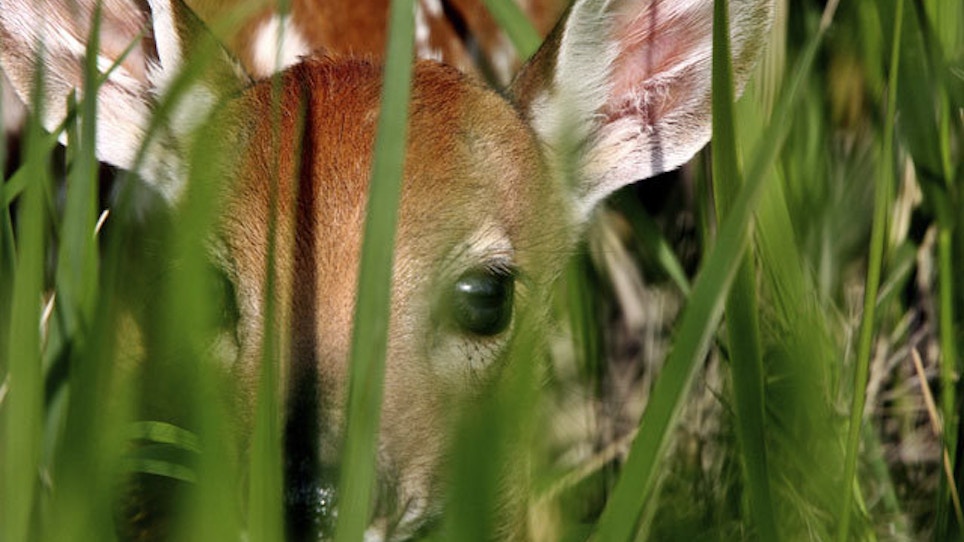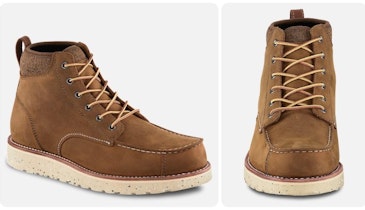In early season, pinpointing the biggest doe can lead you to the biggest buck. Old does often come into estrous 14-28 days ahead of the majority of females.
Locating those early-cycling does is the key to pinpointing the most dominant buck in a local deer herd. If there are only one or two does around that are in heat, he’s definitely going to get the rights to breed them. That hierarchy has been established all summer, or more likely for years.
But in late season, that same dominant buck will concentrate on a different type of doe: the youngest and therefore the smallest ones.
Searching for and patterning these young does—yearlings and even fawns in healthy herds—can lead you to the heaviest bucks still alive and breeding in December and January.
The truth is, does don’t all breed at the same time. About ten percent of females, often old, sway-backed, long-nosed does, breed in October. The majority of does (70-80 percent) breed in early to mid-November.
But that leaves a third group. From 10-20 percent of females, mostly yearlings and fawns, don’t get impregnated during either during early October breeding or the chaos of the main rut in November.
Those deer typically breed in December and January. Quality Deer Management Association studies show that about 25 percent of female fawns breed nationwide and as many as 70 percent in states such as Iowa.
These fawns and yearling does are the key to your late season success. The small number of these young, late-cycling females available makes them magnets for the biggest bucks.
I used to be skeptical of the secondary rut. But in recent years I’ve seen the power of the late rut to draw out big bucks demonstrated time and again. Breeding in December and January is commonplace. And this activity almost always involves the oldest, heaviest bucks.
A couple of years ago on a grouse hunt I watched stunned as a huge 10-point bred a fawn at the edge of a brushy field — in February.
Find Fawns
Focusing on these young does is your key to great late season action. First, be on the lookout for one year-old does--long-legged, thin, with slight bodies and short heads. Also learn to recognize female from male fawns. They’re smaller, with narrower tapered faces and delicate features. And of course they lack bumps in front of their ears.
These 7-8 month and 1.5 year-old does will mostly hang out near the main female herd. But as the secondary rut approaches, they’ll pull away slightly because they want to differentiate themselves and announce that they’re ready to breed.
Pheromones wafting in the air partly tell bucks that they’re ready. But they also alert them with their body language and movement.
They’ll move about 50 to 75 yards from the herd as they feed, travel through transition corridors, and bed. They also might crook their tails to the side or straight out.
Pattern Them
Take your cue from this and locate major late season doe feeding areas such as soybean, corn, wheat, and oat fields, as well as lightly-hunted isolated food plots. Then pinpoint travel routes between there and bedding cover on gentle knolls, in pine groves, or in grassy or weedy areas nearby.
Also note brushy staging areas next to the feed areas with saplings, briars, honeysuckle and blowdowns where the deer hang out before venturing into the fields to feed.
Once you’ve pinpointed these key elements of doe herd travel, start scouting for small-bodied, antlerless deer on the fringes or slightly off to the side of the main herd.
Ambush Him
Focus on the downwind side of areas where you’ve located these younger does. Bucks will be coming from that direction to scent check the air before barging in. They’ll also be coming from the nearest thick security cover where they’ll be holed up, waiting for that one last breeding opportunity.
That could mean a brushy ridge, dense swamp, brier thicket, or overgrown clear-cut. Once you’ve located those late season buck hangouts, look for the thick hollows, overgrown ditches, and strips of brush a mature buck will use as he travels searching for these young does.
Look for fresh rubs, scrapes, large hoof prints, and thinly-outlined trails. Hang your stand there. You probably won’t actually see the young doe from your stand. All you have to know is that the biggest buck in the herd is coming for her, and this is the route he’s taking.
Stage a Stalk
As an alternate tactic, in areas with mixed open country and brushy cover, I like to glass from a high spot and make a stalk. Try to pick out small-bodied, isolated does. Then search nearby plum, olive, laurel and cedar thickets to locate the accompanying buck.
Watch whether they’re moving or staying put. Then execute a careful, looping crosswind stalk.
Sure, focusing on the biggest does can yield some exciting early season action while most hunters think the rut is still weeks away. But to my mind, nothing tops the excitement of going after a dominant buck trying to breed one last young doe before curling up against a secluded log in an isolated thicket to endure the hardships of winter.






